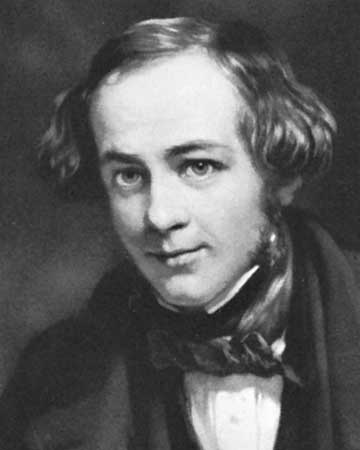Rawlinson, Sir Henry Creswicke
British orientalist
born April 11, 1810, Chadlington, Oxfordshire, Eng.
died March 5, 1895, London
 British army officer and Orientalist who deciphered the Old Persian portion of the trilingual cuneiform inscription of Darius I the Great at Bīsitūn, Iran. His success provided the key to the deciphering, by himself and others, of Mesopotamian cuneiform script, a feat that greatly expanded knowledge of the ancient Middle East.
British army officer and Orientalist who deciphered the Old Persian portion of the trilingual cuneiform inscription of Darius I the Great at Bīsitūn, Iran. His success provided the key to the deciphering, by himself and others, of Mesopotamian cuneiform script, a feat that greatly expanded knowledge of the ancient Middle East.In 1827 Rawlinson went to India as a British East India Company cadet, and in 1833 he and other British officers were sent to Iran to reorganize the shah's army. There he became keenly interested in Persian antiquities, and deciphering the cuneiform inscriptions at Bīsitūn became his goal. After two years of work, Rawlinson published his translations of the first two paragraphs of the inscription (1837). Required to leave the country because of friction between Iran and Britain, Rawlinson was nevertheless able to return in 1844 to obtain impressions of the Babylonian script. As a result, his Persian Cuneiform Inscription at Behistun appeared (1846–51); it contained a complete translation, analysis of the grammar, and notes—altogether an achievement yielding valuable information on the history of ancient Persia and its rulers. With other scholars he succeeded in deciphering the Mesopotamian cuneiform script by 1857. The way to understanding ancient Babylonia and Assyria and much of biblical history now lay open.
Meanwhile Rawlinson had become British consul at Baghdad (1843) and had given his collection of antiquities to the British Museum (1849–51). He became consul general at Baghdad (1851) and succeeded the archaeologist Henry Austen Layard in the work of obtaining ancient sculptures for the museum. On resigning his post with the British East India Company (1855), he was knighted and made a crown director of the company. He sat in Parliament (1858 and 1865–68) and was minister to the Iranian court at Tehrān (1859). His other writings include A Commentary on the Cuneiform Inscriptions of Babylonia and Assyria (1850) and Outline of the History of Assyria (1852).
- perovskite
- peroxide
- peroxisome
- peroxy acid
- Perpetua
- perpetual calendar
- Perpetual calendar
- perpetual motion
- Perpignan
- Per Ramessu
- Perrault, Charles
- Perrault, Claude
- Perrault, Pierre
- Perrers, Alice
- Perret, Auguste
- Perrin, Ami
- Perrine, Charles Dillon
- Perrin, Jean
- Perron, Edgar du
- Perronet, Jean
- Perrot, Jules
- Perrot, Nicolas
- Perrot, Sir John
- Perry
- Perry, Antoinette